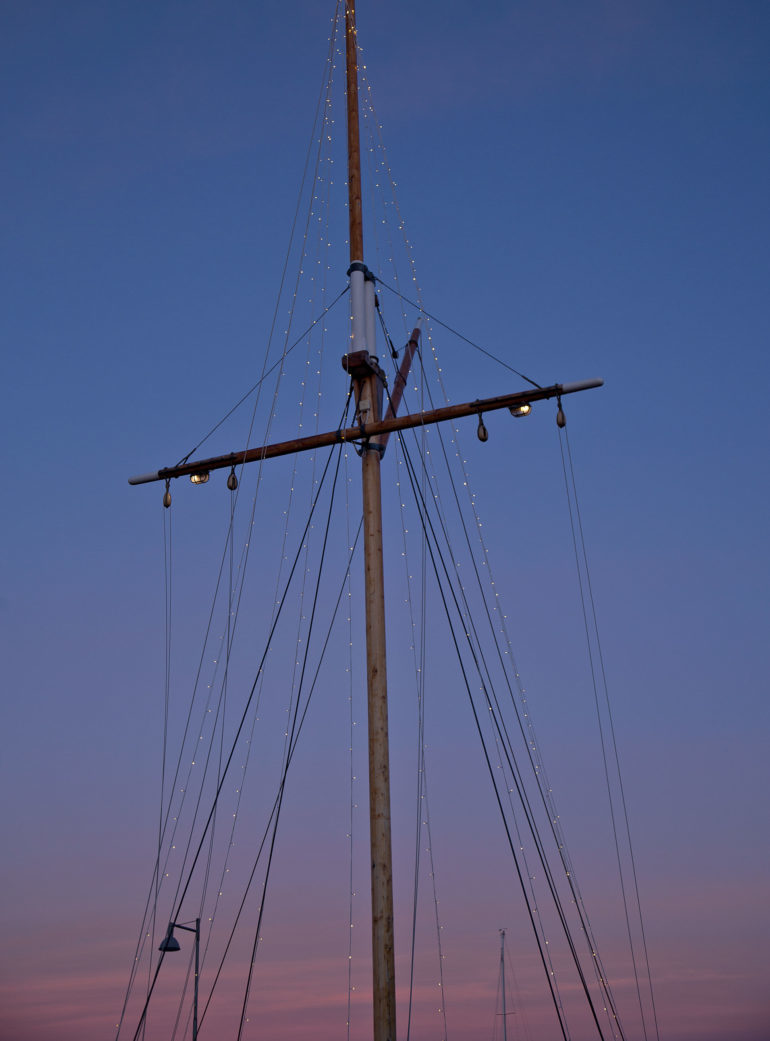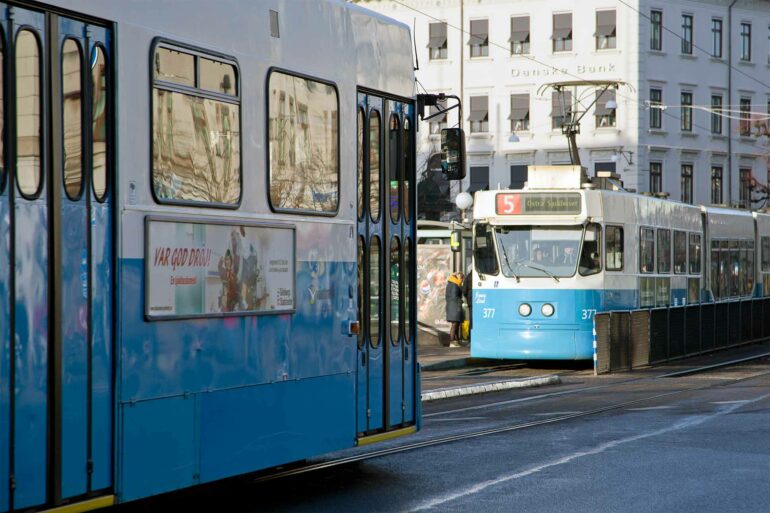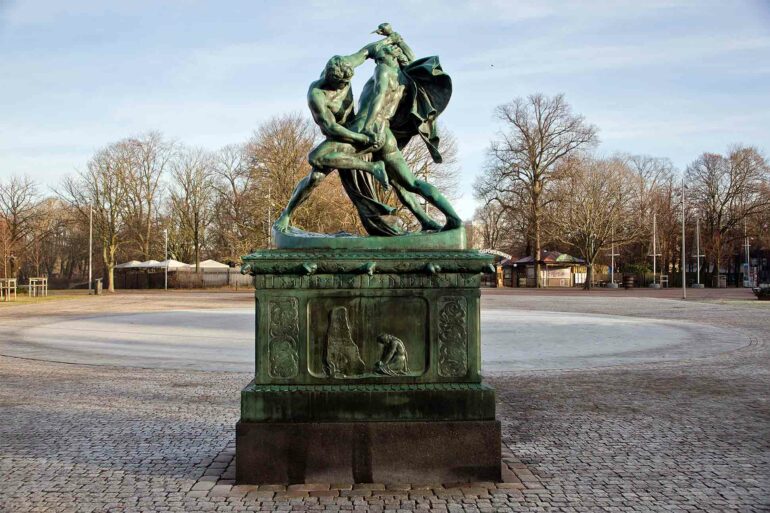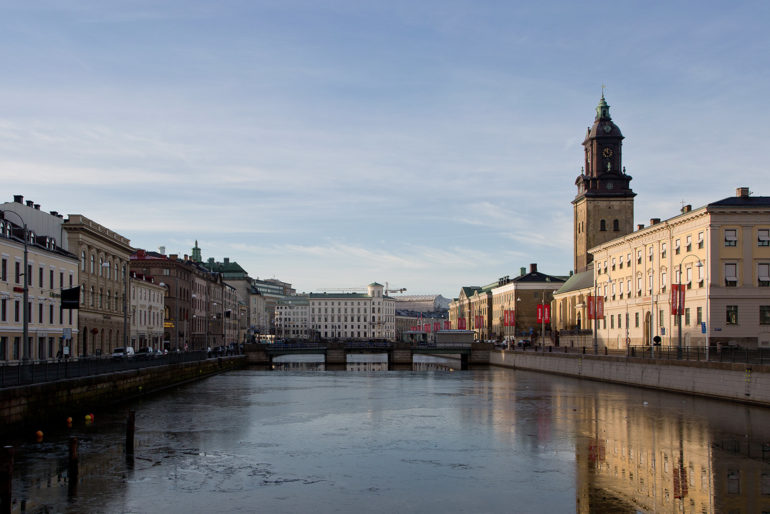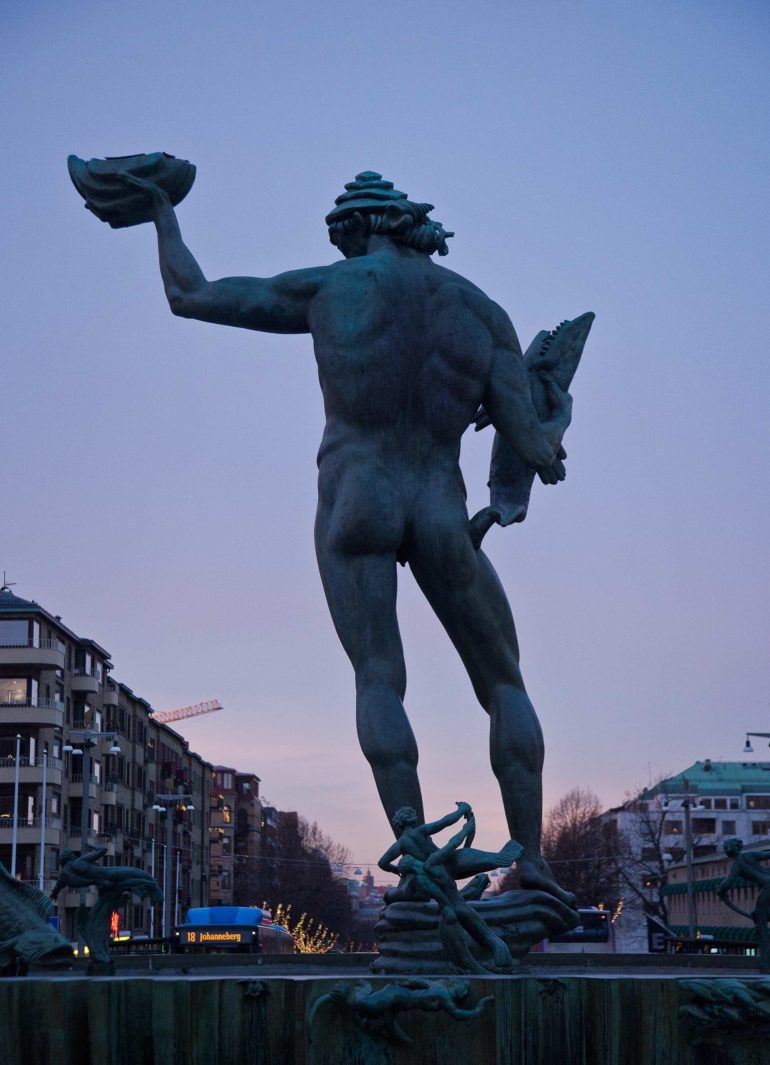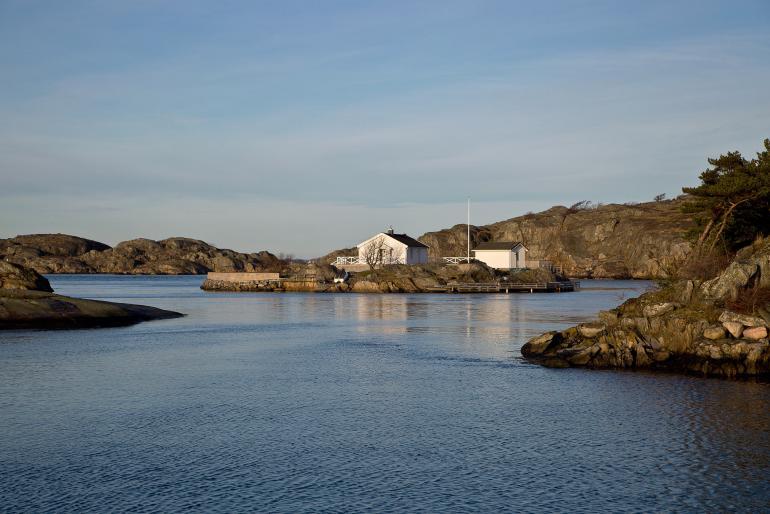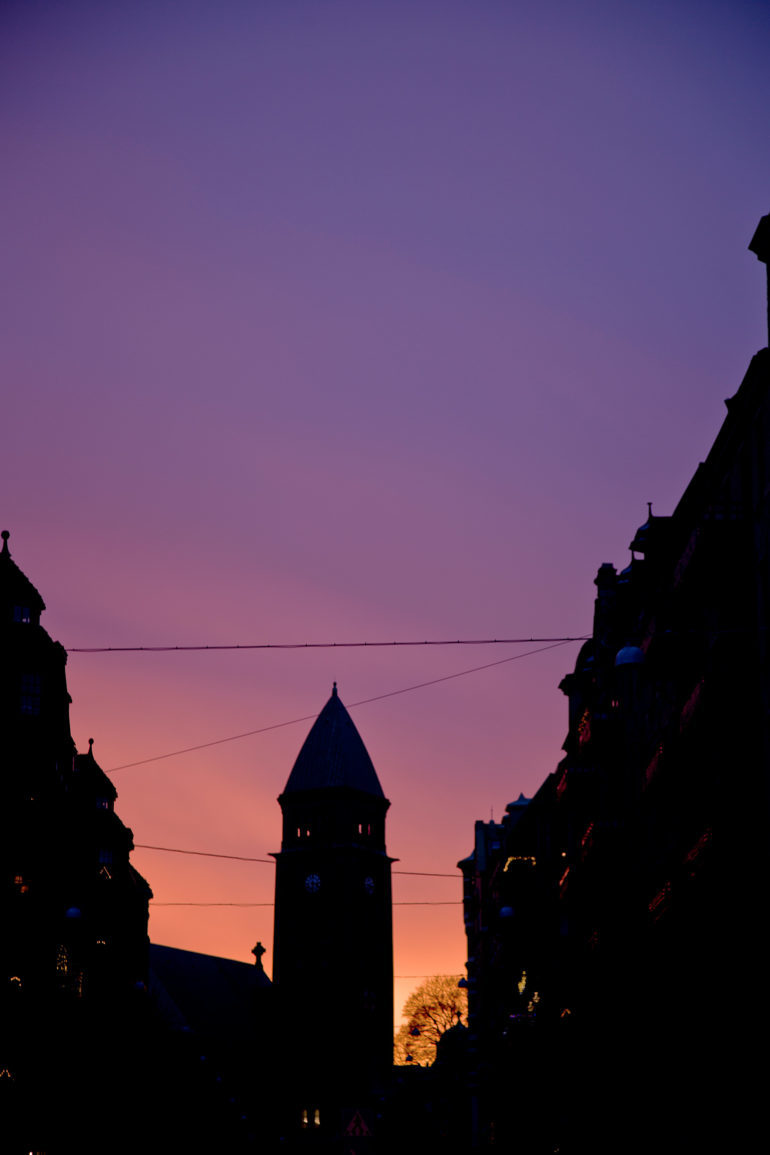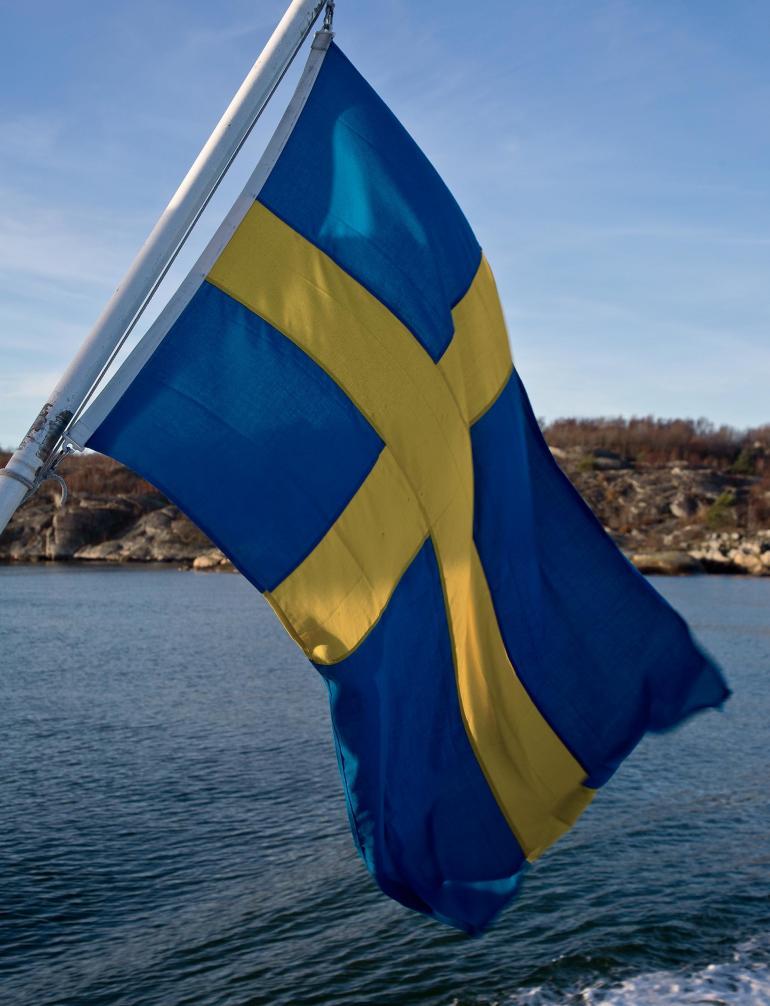Regardless, I can’t seem to shake an underlying sense of melancholy. Perhaps it’s because I’ve seen too many brooding Swedish dramas set against this landscape or maybe I’m just being affected by the strangely beautiful quality of the mid-winter light. Like the rest of the country in December, West Sweden’s days are short, however, they don’t reach the 24-hour perpetual darkness of the more northern areas. While I’ve been here, the sun only ever seems to have stayed low in the sky casting long shadows. The result is a very cinematic half-light which remains pretty much constant throughout the day until sunset when the sky often turns gorgeous hues of orange, pink and mauve. Every turn is another photogenic scene, every frosty detail a potential subject for a close-up, which was what inspired me to grab my camera and head out of the city. As the ferry docks on the little island, the few other disembarking passengers quickly disperse, leaving me to wander around in complete silence. After a quick look at the map on the dockside, I get my bearings and head up the hill. An elderly couple in a golf buggy swing past me but other than that and a few seagulls, I don’t see another soul. After a few minutes, I come across a side turning lined with little fishing huts and just beyond that, I find myself stood on the end of a little wooden jetty, rowing boats knocking gently against one another as they bob around in the gently undulating water. I take a long deep breath; the freshness of the cool air filling my lungs as I take in the view.
“Every turn is another photogenic scene, every detail a potential close-up.”
The Southern Archipelago is purported to be the origin of the famous poem Beowulf. The protagonist (the poem’s namesake) is a kind of Anglo-Saxon superhero: a boy, destined to be a king, who demonstrates heroic acts of strength by fighting and defeating all manner of sea monsters and dragons. All this seems a far cry from the genteel island of today. But like all good stories, it’s rooted in truth and it’s not hard to imagine how different this place must have felt a thousand years ago with no modern means of transportation. Nature would have ruled with a violence that we mollycoddled, 21st-century folk can barely comprehend. Surviving the cold of the Scandinavian winter alone would have been a relentless battle. The main source of food would have come from the sea and to get it would mean not only building boats but putting one’s life in the hand of the gods whenever they were launched into the unforgiving water. And it’s that relationship with the sea that still defines this area, from the hundreds of little boats lying like beached orcas on the shoreline of the bay I’ve happened upon, to Feskekôrka, Gothenburg’s ‘Fish Church’ where locals and tourists alike come to sample the day’s catch. It’s the thought of a meal pricking my thoughts, I backtrack to where I saw a sign for a tea shop – a walk that takes me down more narrow lanes that weave around life-sized, wooden doll’s houses, some amusingly with matching bird boxes, each set inside its own manicured garden, surrounded by white, picket fences. When I reach the shop, I find it closed up for the winter.
I head back to the ferry; checking the timetable on the wall of the little shelter, I realise that I’m 15 minutes early. True to form 12 minutes later, the ferry appears from behind the headland and people materialise from nowhere. Excited, happy kids play around me and older couples swap jokes with one another, breaking my contemplative mood. Their promptness reminds me of an explanation I had read about Swedish timekeeping. It pointed out that in hot countries like Spain, time is somewhat elastic, to say the least. An arrangement to meet for dinner at 10pm can easily transpire to be more like 10:30pm or even 11pm without any need for explanation, but in colder climes like Sweden, keeping someone waiting even for five minutes can turn welcoming smiles into frosty glares. The reason being that just five minutes in sub-zero temperatures can make the difference between life and death and considering that I can no longer feel my frozen feet, despite my new socks, it certainly now makes perfect sense to me.
Martin’s trip to Sweden’s western city was courtesy of Visit Sweden. To find out more, visit www.visitsweden.lgbt.
Photography by Martin Perry
Get out there
Do…
… wrap up warm. Insulated footwear, a thick hat and thermal gloves will make all the difference.
… hire a car and get out of the city to the Northern Archipelago for a whole different perspective.
… invest in a Citycard, it will get you into just about everywhere and is good for public transport including the ferries to the nearby islands.
Don’t…
… be too cynical about Christmas. The Swedes celebrate it with a child-like enthusiasm that’s infectious, even to an old grinch like me. Make sure you visit a Christmas market, although the biggest is at Liseberg, Gothenburg’s large amusement park.
… forget to bring a small pack away suitcase, you are going to need all the extra room you can get for all the wonderful things you’ll want to buy.


